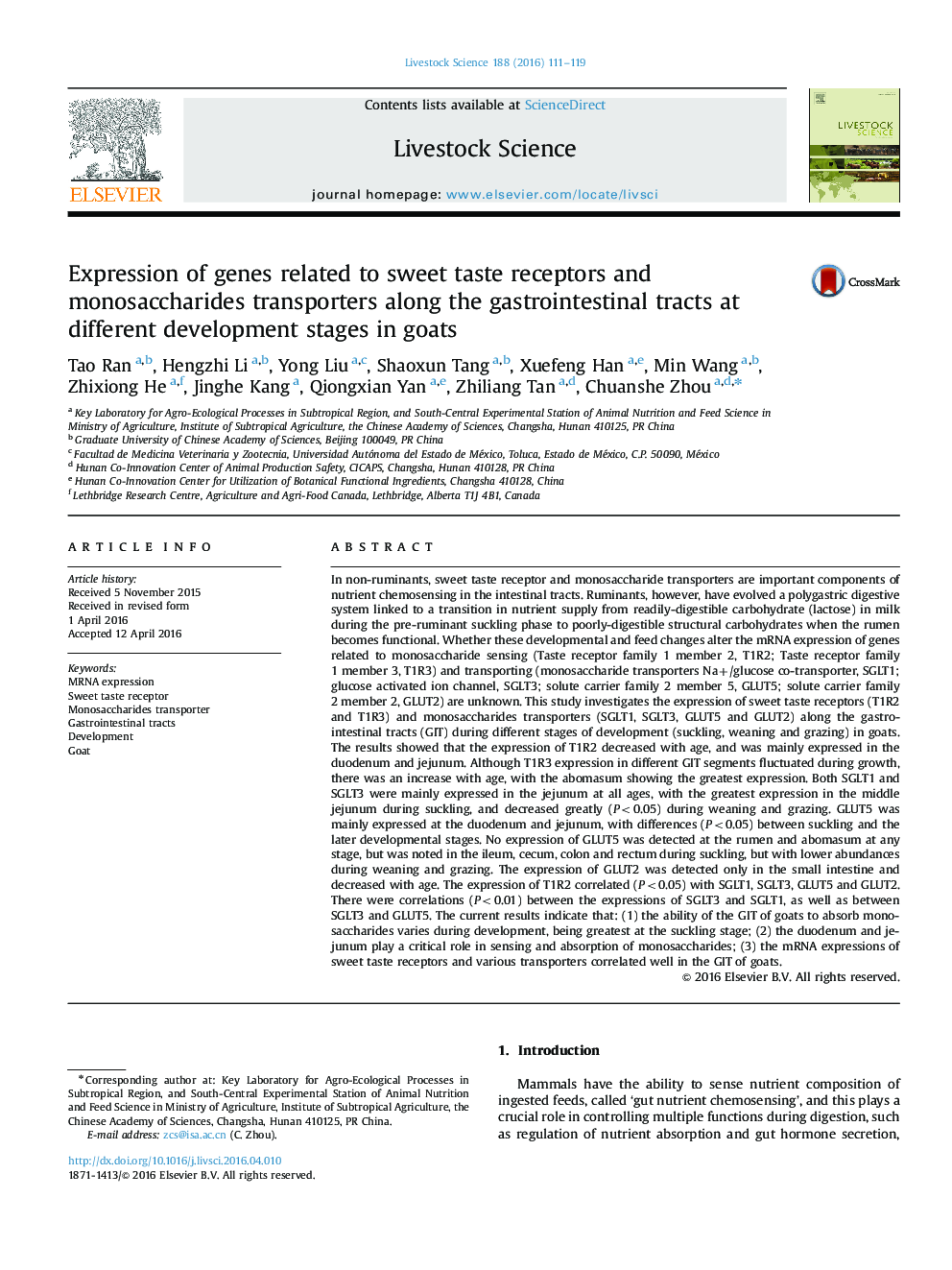| کد مقاله | کد نشریه | سال انتشار | مقاله انگلیسی | نسخه تمام متن |
|---|---|---|---|---|
| 2446901 | 1553944 | 2016 | 9 صفحه PDF | دانلود رایگان |
• Expression of sweet taste receptor and transporters were systematically studied.
• The expression of sugar transporters in the GIT declines with age.
• Duodenum and jejunum play critical roles in monosaccharides sensing and absorption.
• The expressions of sweet taste receptors and various transporters correlated well.
In non-ruminants, sweet taste receptor and monosaccharide transporters are important components of nutrient chemosensing in the intestinal tracts. Ruminants, however, have evolved a polygastric digestive system linked to a transition in nutrient supply from readily-digestible carbohydrate (lactose) in milk during the pre-ruminant suckling phase to poorly-digestible structural carbohydrates when the rumen becomes functional. Whether these developmental and feed changes alter the mRNA expression of genes related to monosaccharide sensing (Taste receptor family 1 member 2, T1R2; Taste receptor family 1 member 3, T1R3) and transporting (monosaccharide transporters Na+/glucose co-transporter, SGLT1; glucose activated ion channel, SGLT3; solute carrier family 2 member 5, GLUT5; solute carrier family 2 member 2, GLUT2) are unknown. This study investigates the expression of sweet taste receptors (T1R2 and T1R3) and monosaccharides transporters (SGLT1, SGLT3, GLUT5 and GLUT2) along the gastrointestinal tracts (GIT) during different stages of development (suckling, weaning and grazing) in goats. The results showed that the expression of T1R2 decreased with age, and was mainly expressed in the duodenum and jejunum. Although T1R3 expression in different GIT segments fluctuated during growth, there was an increase with age, with the abomasum showing the greatest expression. Both SGLT1 and SGLT3 were mainly expressed in the jejunum at all ages, with the greatest expression in the middle jejunum during suckling, and decreased greatly (P<0.05) during weaning and grazing. GLUT5 was mainly expressed at the duodenum and jejunum, with differences (P<0.05) between suckling and the later developmental stages. No expression of GLUT5 was detected at the rumen and abomasum at any stage, but was noted in the ileum, cecum, colon and rectum during suckling, but with lower abundances during weaning and grazing. The expression of GLUT2 was detected only in the small intestine and decreased with age. The expression of T1R2 correlated (P<0.05) with SGLT1, SGLT3, GLUT5 and GLUT2. There were correlations (P<0.01) between the expressions of SGLT3 and SGLT1, as well as between SGLT3 and GLUT5. The current results indicate that: (1) the ability of the GIT of goats to absorb monosaccharides varies during development, being greatest at the suckling stage; (2) the duodenum and jejunum play a critical role in sensing and absorption of monosaccharides; (3) the mRNA expressions of sweet taste receptors and various transporters correlated well in the GIT of goats.
Journal: Livestock Science - Volume 188, June 2016, Pages 111–119
